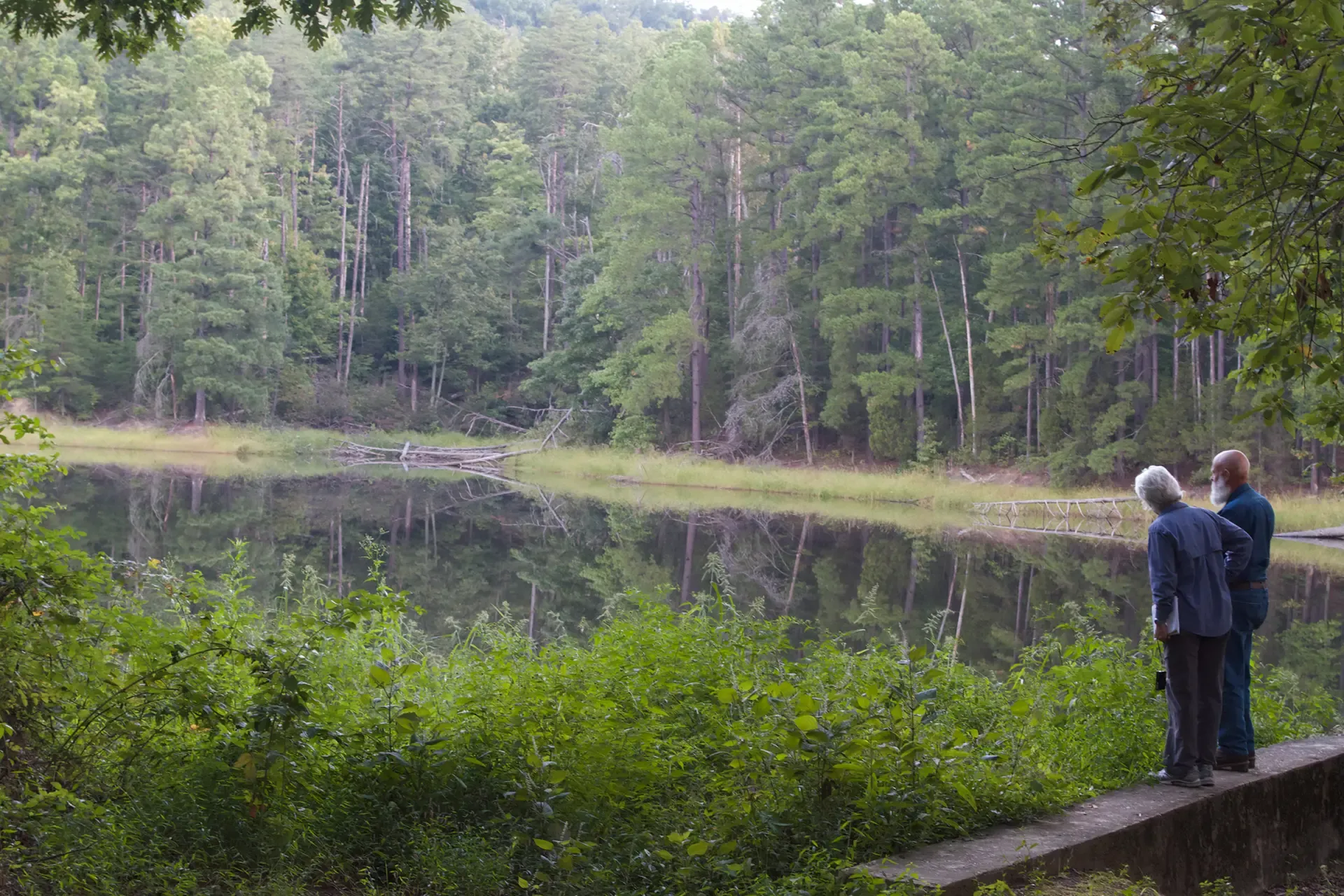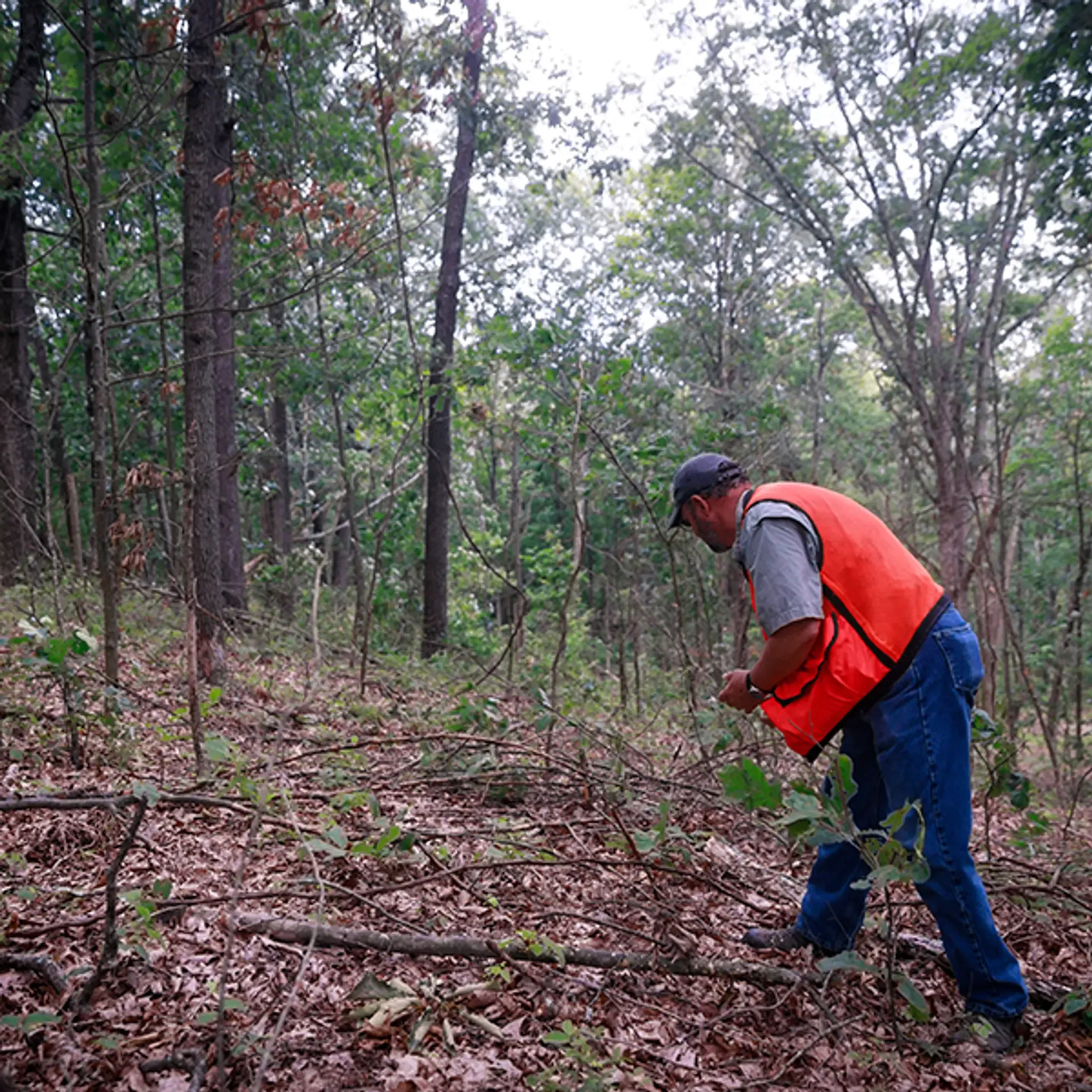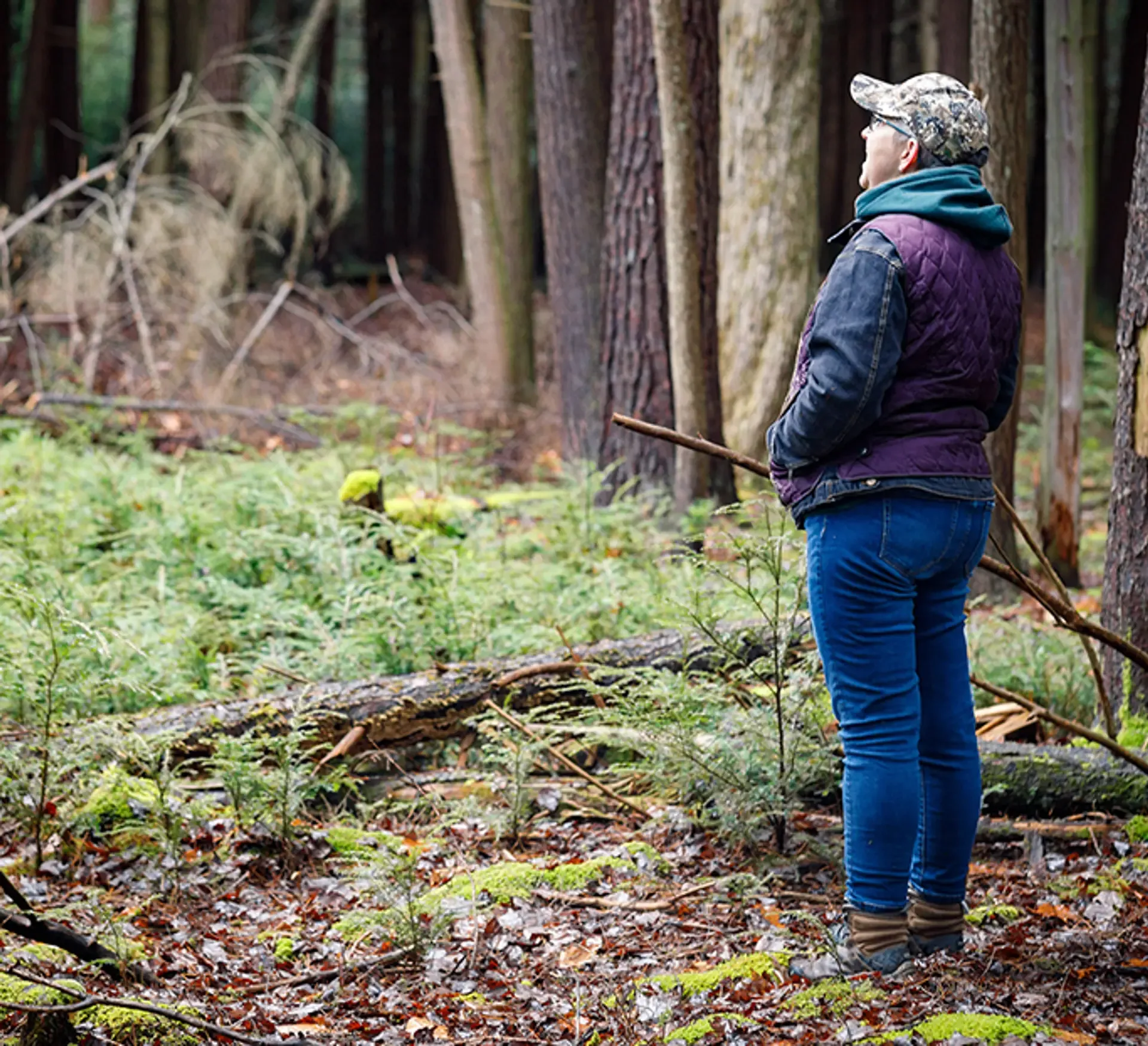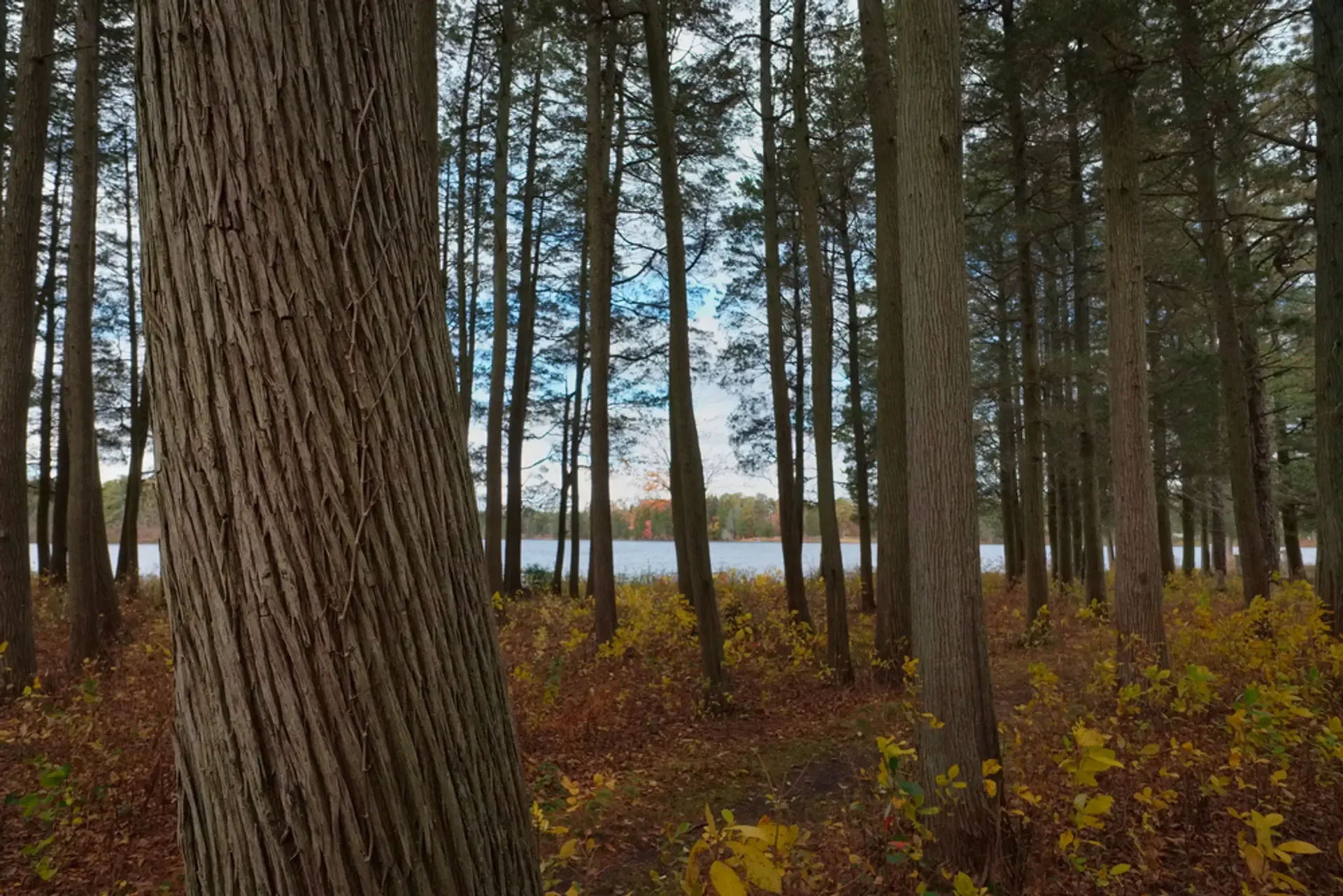Determining a True Carbon Benefit Part 3: From Intention to Action

“I want my woods to be healthy.”
“I want to create better habitat for wildlife.”
“I want to pass on this land to my children and grandchildren.”
Ask a family forest owner what drives them to own land and these are some of the most common phrases you will hear. But what do these desires have to do with measuring and calculating the carbon benefit of a forest carbon project? More than a ton, to say the least.
A forest carbon project pays forest owners to increase the carbon sequestered and stored in their forest. The project must measure the carbon impact before they are able to sell this carbon to companies in the form of verified carbon credits.
To do this means measuring additionality or “Is the carbon generated from a forest carbon project because of the project or would it have happened absent the particular project or intervention?”
To answer this question, most look to intention: Did the landowner intend to capture carbon in his/her trees regardless? While intention does play a role, it is often misinterpreted by those unfamiliar with the needs and behaviors of forest owners.
Rather, to create a true carbon impact, a forest carbon project should factor intention into program design, yet measure real-life behavior.
Let us elaborate:
Across the U.S. there are 21 million people that make up the family forest owner community. The Forest Service’s National Woodland Owner Survey (NWOS), which gathers data from forest owners every year, reports the top reasons for owning forestland are beauty, wildlife, and legacy (page 26 of the above report).
Yet, while owners express these good intentions for their ownership, the vast majority of them are not proactively taking steps that increase the health and productivity of these woods.

Landowner Mitch Farley (OH) in his woods.
For example, less than 1 in 5 landowners have received formal forest management advice, and less than 11% have a written forest management plan, per the same Forest Service dataset (NWOS page 30). Other surveys show similar results. In an American Forest Foundation type: asset-hyperlink id: 24fk5UOBiMqDTgFZw4MBqR, we found that 83% of landowners surveyed named forest health priorities such as protecting and improving wildlife habitat, protecting nature and biodiversity, and protecting water resources as primary reasons for ownership. Yet only 13% of landowners stated they definitely would conduct forest management practices in the next 12-month period to improve their forests.
There is a noteworthy gap between landowners’ intentions and their actions on the ground.
The two most common reasons for this discrepancy are a type: asset-hyperlink id: 3Im0JHL4V3SyO8AXtN0xH9. Most landowners are not working with a forester, who can help them make informed decisions, identify appropriate activities, and avoid damaging practices.
Secondly, family forest owners are not wealthy landowners. In fact, the NWOS reports, 33% of family forest landowners have an annual household income of $50,000 or less.
Some landowners do make money from their land. But as noted above, timber harvesting is not ranked as any of the top reasons people own their land. Most landowners will only harvest once in their lifetime, and when they do, it is often in response to an unanticipated financial need and without professional guidance that might derail even the best of their intentions.
The actual observed state of our forests tells a consistent story of unfulfilled intentions.
For example, in the Northeast, forests lack diversity in species and age, and are vastly overgrown with invasive species and vines. When harvesting is conducted, it is mostly without a forester, and the common practice is high-grading – or removing the large quality trees and leaving only the smaller trees – an unsustainable practice which reduces the quality and productivity of the next generation of the forest, ultimately decreasing the opportunity to sequester and store more carbon.
These are the realities of forest ownership. And they must be accounted for in program design and appropriately considered in the measurement of the carbon impact of a project.
Taking this information, AFF, with our partner The Nature Conservancy, is approaching our carbon program, the Family Forest Carbon Program, differently. We focus on empowering individual landowners to increase the carbon sequestration and storage of their forests, as well as improving forest health and habitats by paying landowners to implement sustainable, climate-friendly best practices.
When it comes time to measure the carbon generated by those enrolled, we take intention out of the equation and focus on behavior.
Inspired by the control groups used in medical trials, the Family Forest Carbon Program’s methodology compares enrolled properties to similar unenrolled properties. This allows us to remove a projected baseline that includes intention, and focuses instead on real, observed data.
Specifically, when a property is enrolled in the Family Forest Carbon Program, it is ‘matched’ with a blend of similar properties via the Forest Service’s Forest Inventory and Analysis (FIA) data plots to set a baseline. For example, if it’s a property that has been unmanaged, it is matched to 10 control group properties with similar conditions. If it’s a landowner who is considered a ‘good steward’ and already managing, their property is matched with 10 similarly managed control group properties.

Landowner Susan Benedict (PA) in her woods.
By comparing like properties in real-time, the program is able to remove external factors that may influence the carbon on the land - such as shifts in market demand or new local policies. And, importantly, it’s not dependent on comparing current behavior to a hypothesis of future behavior, removing intentionality from the equation. Ultimately, the program is isolating the implementation of the forestry practices contracted by the Family Forest Carbon Program as the factor that increases the carbon on the land over time.
Using this methodology for the Family Forest Carbon Program’s carbon accounting provides an extremely credible claim of additionality to its carbon benefit.
This new methodology is set to be approved by Verra’s Verified Carbon Standard this year. Interested in learning more about the Family Forest Carbon Program? Let us help you get to the right place:
If you are a forest owner or forester interested in the program, visit FamilyForestCarbon.org.
If you are interested in verified carbon credits as part of your climate strategy, please reach out to John Ringer, Director of Carbon Market Development.
Related Articles

April 13, 2021
Determining a True Carbon Benefit Part 1: Additionality
Of all the concepts in the world of carbon credits, perhaps the most difficult to understand, yet critically important is ‘additionality.’ Ensuring carbon additionality is essential to ensure a company’s climate investment is making a true, positive difference. Christine Cadigan, Senior Director of the Family Forest Carbon Program, further explains the concept.

May 26, 2021
Determining a True Carbon Benefit Part 2: Baselines
The Family Forest Carbon Program has created a new methodology, including an innovative approach to setting a baseline, similar to what is done in medical trials.

December 2, 2021
Determining a True Carbon Benefit Part 4: Permanence
An important step to ensuring that a carbon benefit is valid is if it stands the test of time. This is called permanence, which is defined as ‘the longevity of the carbon benefit of at least 100 years.’ The Family Forest Carbon Program is working to ensure the permanence of our carbon benefit.